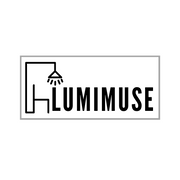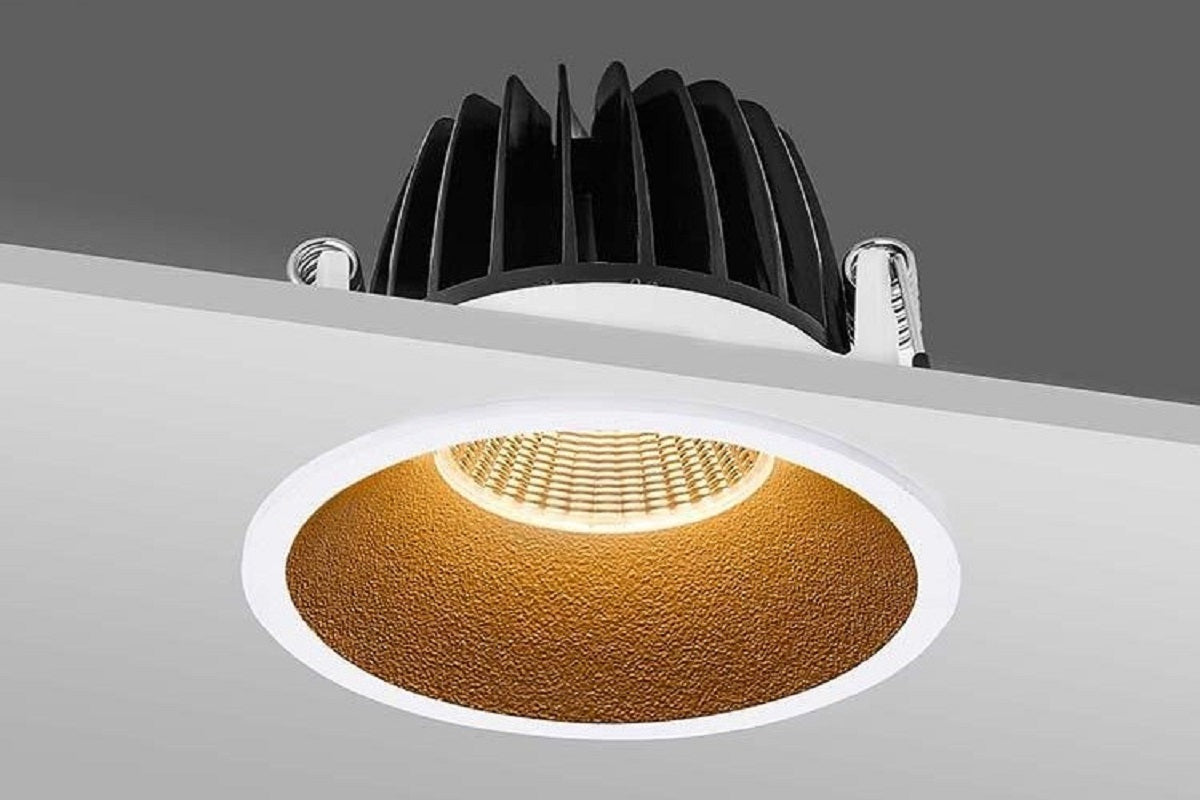Introduction
LED recessed downlights are ceiling light fixtures that are installed flush with the ceiling, providing a sleek and streamlined lighting solution. These fixtures are versatile and can be used in various settings, offering both ambient and task lighting options with a modern and unobtrusive design.

Ⅰ. Benefits of Using LED Recessed Downlights
- Energy Efficiency: LED recessed downlights are highly energy-efficient, consuming less power than traditional lighting fixtures and leading to lower electricity costs.
- Longevity: LED lights have a longer lifespan compared to traditional bulbs, reducing the frequency of replacements and maintenance.
- Design Flexibility: Recessed downlights offer a clean and minimalist look, allowing for customizable lighting designs without compromising on illumination.
- Dimmable Options: Many LED recessed downlights are dimmable, providing control over the light output and creating different ambiance settings.
- Environmentally Friendly: LED lights are eco-friendly as they do not contain harmful substances like mercury and produce less heat, reducing cooling costs.
Ⅱ. Types of LED Recessed Downlights

2.1 Differences between Recessed Downlight LED and LED Downlight Recessed
- Recessed Downlight LED: Refers to a downlight fixture that uses LED technology for illumination. These fixtures are designed to be installed into the ceiling, providing focused and directional lighting.
- LED Downlight Recessed: Denotes a recessed lighting fixture that incorporates LED technology. These fixtures are recessed into the ceiling to create a streamlined and modern lighting effect.
2.2 Popular Styles and Designs of LED Recessed Downlights

- Round Recessed Downlights: Circular fixtures that offer a classic and sleek look, suitable for various applications.
- Square Recessed Downlights: Square-shaped fixtures that provide a contemporary and geometric aesthetic, ideal for modern interiors.
- Adjustable Recessed Downlights: Fixtures with adjustable heads that allow for flexibility in directing the light beam, perfect for highlighting specific areas or objects.
- Trimless Recessed Downlights: Minimalist fixtures that blend seamlessly into the ceiling without visible trim, creating a clean and unobtrusive lighting effect.
- Color-Changing Recessed Downlights: LED fixtures that offer color-changing capabilities, allowing for dynamic lighting effects and mood customization.
III. Installation and Maintenance of LED Recessed Downlights
3.1 Step-by-Step Guide for Installing LED Recessed Downlights
- Choose the Location: Determine the placement of the recessed downlights based on the lighting requirements of the space.
- Turn Off Power: Switch off the power to the area where you will be installing the downlights at the circuit breaker.
- Cut Openings: Use a hole saw to create openings in the ceiling for the recessed downlights.
- Wiring: Connect the wiring from the power source to the downlight fixtures following the manufacturer's instructions.
- Secure Fixtures: Insert the downlight fixtures into the openings and secure them in place using the provided clips.
- Test the Lights: Turn the power back on and test the recessed downlights to ensure they are functioning properly.
3.2 Tips for Maintaining and Cleaning LED Recessed Downlights
- Regular Dusting: Use a soft, dry cloth to gently dust the surface of the downlights to prevent dirt and debris buildup.
- Avoid Harsh Chemicals: When cleaning, avoid using harsh chemicals or abrasive materials that can damage the finish of the fixtures.
- Check for Loose Connections: Periodically inspect the wiring connections to ensure they are secure and free of any damage.
- Replace Bulbs When Needed: If an LED bulb in the recessed downlight fails or dims significantly, replace it promptly to maintain optimal lighting performance.
- Professional Inspection: Consider scheduling regular maintenance checks by a qualified electrician to ensure the downlights are operating safely and efficiently.
Ⅳ. Energy Efficiency and Cost Savings with LED Recessed Downlights
4.1 Comparison of Energy Consumption between LED and Traditional Lighting
LED Recessed Downlights vs. Traditional Lighting
- LED recessed downlights are significantly more energy-efficient than traditional lighting fixtures such as incandescent or halogen bulbs.
- LED technology converts a higher percentage of energy into light, resulting in lower energy consumption and reduced electricity costs.
- Traditional lighting sources waste more energy as heat, while LEDs produce very little heat, making them more efficient in converting energy into light.
4.2 Long-Term Cost Benefits of Using LED Recessed Downlights
- Reduced Electricity Bills: LED recessed downlights consume less energy, leading to immediate cost savings on electricity bills compared to traditional lighting.
- Long Lifespan: LED bulbs have a longer lifespan than traditional bulbs, reducing the frequency of replacements and maintenance costs.
- Lower Cooling Costs: LED lights produce less heat than traditional bulbs, reducing the strain on cooling systems and lowering cooling costs.
- Rebates and Incentives: Many utility companies offer rebates and incentives for installing energy-efficient LED lighting, further reducing upfront costs and providing ongoing savings.
- Overall Savings: While LED recessed downlights may have a higher initial cost, the long-term energy savings, reduced maintenance, and cost benefits outweigh the upfront investment, making them a cost-effective lighting solution in the long run.
Ⅴ. Design Tips for Incorporating LED Recessed Downlights in Your Space
5.1 Creative Ways to Use LED Recessed Downlights for Accent Lighting
- Highlighting Artwork: Position LED recessed downlights above or below artwork to create a focal point and enhance the visual appeal of the space.
- Cove Lighting: Install LED recessed downlights in coves or ledges to provide indirect ambient lighting that adds depth and warmth to the room.
- Task Lighting: Use adjustable LED recessed downlights to illuminate specific task areas such as kitchen countertops, workspaces, or reading nooks.
- Wall Washing: Position LED recessed downlights to wash light across walls, creating a soft and inviting ambiance while visually expanding the space.
- Outdoor Accent Lighting: Install LED recessed downlights in outdoor areas like patios or decks to highlight architectural features, landscaping, or pathways.
5.2 How to Choose the Right Color Temperature and Brightness for Your Space
- Color Temperature
- Choose warmer color temperatures (e.g., 2700K-3000K) for a cozy and inviting atmosphere in living spaces or bedrooms.
- Opt for cooler color temperatures (e.g., 4000K-5000K) for task-oriented areas like kitchens, offices, or bathrooms where bright, daylight-like illumination is needed.
- Brightness
- Consider the size and function of the room when selecting the brightness level of LED recessed downlights.
- Use dimmable LED downlights to adjust the brightness according to different activities and moods in the space.
- Create layers of lighting by combining recessed downlights with other light sources like pendant lights or floor lamps to achieve a balanced and dynamic lighting scheme.
Ⅵ. Conclusion
In conclusion, LED recessed downlights are a smart and stylish lighting choice that offers energy efficiency, design flexibility, and long-term cost savings. By incorporating quality LED lighting into your space, you can create a well-lit and visually appealing environment while reducing energy consumption and maintenance requirements. Choose LED recessed downlights for a modern, sustainable, and cost-effective lighting solution that enhances both the functionality and aesthetics of your space.
Ⅶ. FAQ
7.1 Are LED lights good for recessed lighting?
LEDs are available for recessed lighting as either replacement bulbs, dedicated housings, or as LED retrofit modules. The modules can be simply fitted in almost any recessed housing with a screw-on Edison base socket, eliminating the need for rewiring. Energy savings are a huge draw.
7.2 Can I replace recessed lights with LED?
Make sure that your existing recessed lights can be converted to LED by examining the mounting springs. Torsion springs on an LED retrofit lamp fit into brackets inside the housing. If your old housing lacks the internal brackets, you must replace the fixture with a universal type.
7.3 What is the difference between downlight and recessed light?
One of the main differences between downlights and recessed lights is the direction of the light. Downlights point straight down and are great for task lighting, while recessed lights can be directed at different angles, making them better for general lighting.

